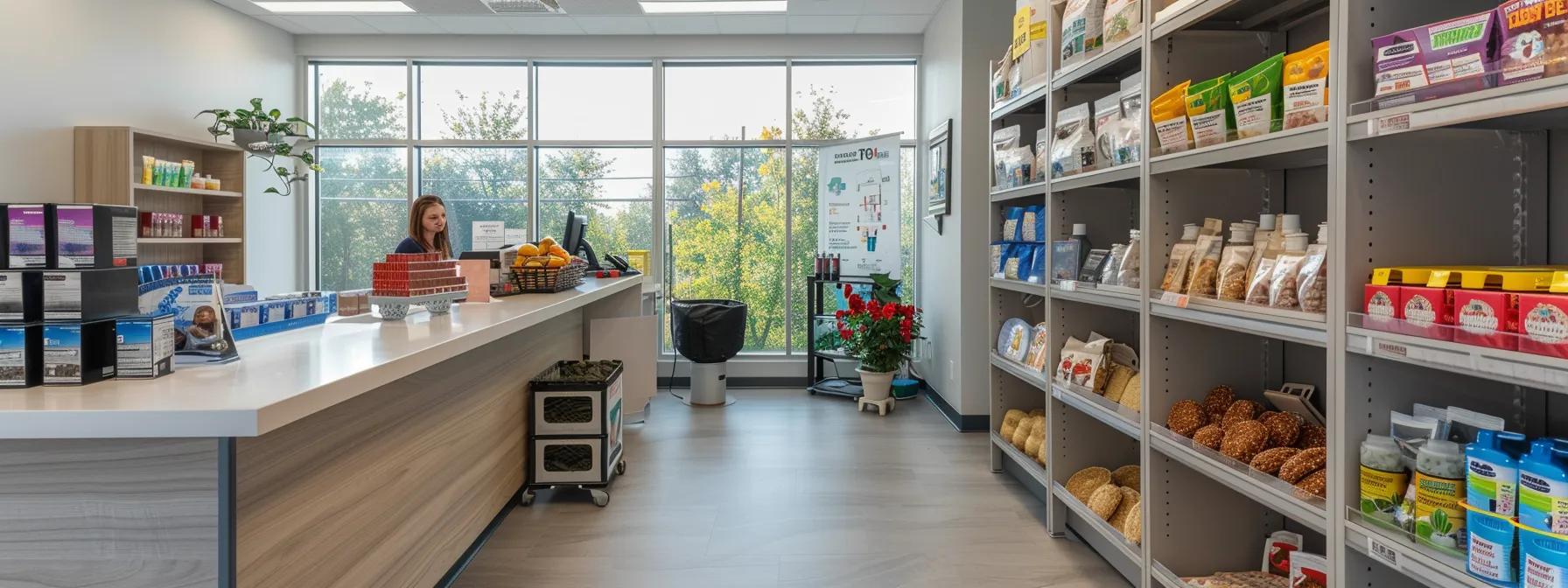
Hypoallergenic Dog Treat Recipes for Sensitive Pups
Introduction
Dogs with food allergies or sensitivities often struggle to find safe, nutritious treats that meet their dietary needs. This comprehensive article addresses the creation of hypoallergenic dog treat recipes designed specifically for sensitive pups. The focus is on using high-quality ingredients such as single-source proteins, gluten-free flours, and natural, nutrient-rich flavorings. It also discusses common allergens like beef, wheat, dairy, and peanut butter and provides guidance on identifying and managing food allergies. The purpose of this guide is to help pet owners develop safe, homemade treats that minimize the risk of allergic reactions while optimizing digestive health and overall well‐being. With references to scientific studies and detailed recipe suggestions, the article integrates topics including vitamin content (like vitamin A), nutrient preservation, and proper processing techniques. Ultimately, this guide aims to empower pet owners to confidently produce hypoallergenic dog treat recipes that offer complete control over ingredients and cater precisely to their sensitive pup’s needs. The article also emphasizes collaboration with veterinary professionals when initiating dietary changes. This proactive approach supports the immune system and enhances the quality of life for dogs dealing with food sensitivities.
Transitioning now to the first section, we explore how to recognize your pup’s need for hypoallergenic treats.
Identifying Your Pup's Need for Hypoallergenic Treats

Understanding when a dog might require hypoallergenic treats is the first step toward ensuring they receive safe and beneficial snacks. Dogs can manifest food sensitivities in various ways, and paying attention to the warning signs is crucial for early intervention.
Recognizing Signs of Food Sensitivities in Dogs
The initial symptom many pet owners notice is digestive upset, which might include diarrhea, vomiting, or inconsistent stool quality. Beyond gastrointestinal distress, dogs with food sensitivities can also exhibit skin irritations such as chronic itching, red patches, or ear infections. For instance, a dog that constantly scratches or develops frequent rashes might be reacting to an allergen present in its commercial diet. Additionally, some dogs demonstrate behavioral changes including fatigue and decreased social interaction, possibly due to discomfort caused by underlying dietary issues. It is important to note that these clinical signs often occur in combination, rather than in isolation. Veterinary diagnostic evaluations, including skin tests and elimination diets, have confirmed that these symptoms can be indicative of food allergy or sensitivity. Research published in the Journal of the American Veterinary Medical Association (JAVMA, 2018) also notes that early recognition of these signs is integral to managing and mitigating long-term issues.
Common Ingredients That Trigger Canine Allergies
Many commercially prepared dog foods and treats contain common allergens such as beef, dairy, chicken, wheat, soy, and even certain additives like xylitol. Beyond the proteins, ingredients such as gluten and artificial preservatives can also trigger reactions in susceptible dogs. A detailed analysis found by the American College of Veterinary Nutrition (ACVN, 2019) reinforces that multiple proteins may complicate the immune response and intensify allergic symptoms. In contrast, hypoallergenic recipes for dogs emphasize ingredients that are less common in typical canine diets, such as novel proteins (e.g., venison, rabbit) and grain-free alternatives like rice flour or oat bran. The avoidance of artificial colors and preservatives further supports the benefits of preparing treats at home. Tailoring ingredient lists and reading labels carefully on commercial products helps confirm which items to avoid during recipe development.
The Value of an Elimination Diet for Pinpointing Allergens
An elimination diet is one of the most effective approaches to identify the precise allergens affecting a dog’s health. In an elimination diet, the dog is fed a single-source protein and carbohydrate source that it has never been exposed to before. This controlled trial typically lasts eight to twelve weeks, during which improvements in skin and digestive symptoms may be observed if the allergen was previously present. According to a study in the Journal of Animal Physiology and Animal Nutrition (2020), such diets can reduce chronic dermatological issues by up to 40% when correctly administered. This process is not solely about eliminating options; it creates a strong baseline that can help veterinarians gradually reintroduce foods to identify specific triggers. Detailed record-keeping in terms of symptom resolution and recurrence plays a significant role in the success of elimination diets. Home-cooked hypoallergenic treats that follow the reintroduction phase step-by-step help owners determine the most appropriate long-term ingredients.
Working With Your Vet to Confirm Dietary Needs
Collaboration with a veterinarian is essential when managing a dog’s food allergies. Vets can perform diagnostic tests, analyze dietary history, and offer guidance on setting up safe elimination diets. A professional assessment ensures that the dog’s nutritional needs are being met while avoiding harmful allergens. Regular check-ups can monitor the progress of the dog’s response to dietary changes. In some cases, veterinarians may also recommend supplements such as omega-3 fatty acids or probiotics to support skin health and immune function during dietary transitions. Studies published by the Veterinary Dermatology Journal (2019) have demonstrated that a clinician-supervised diet can halve the recurrence of allergic episodes compared to unsupervised diets. It is important that pet owners document any changes in behavior, appetite, and symptomatology and discuss these observations during consultations. With careful assessment and thorough monitoring, hypoallergenic treat recipes can be effectively integrated into a comprehensive dietary strategy for sensitive pups.
Key Takeaways: - Recognize signs such as digestive upset and skin irritations for early intervention. - Avoid common allergens like beef, dairy, chicken, wheat, soy, and artificial additives. - An elimination diet is a powerful tool for pinpointing allergens under veterinary guidance. - Collaboration with a vet is essential for monitoring and managing dietary needs effectively.
Core Components of Hypoallergenic Dog Treat Recipes

Creating hypoallergenic dog treat recipes involves careful selection of ingredients that minimize allergen exposure while providing essential nutrients. The core components of these recipes focus on single-source proteins, grain-free flours, and limited ingredients that offer maximum health benefits without triggering allergic reactions.
Selecting Safe Single-Source Proteins for Sensitive Pups
Safe single-source proteins are the foundation of hypoallergenic recipes. Common dietary proteins such as beef and chicken often trigger allergies in sensitive dogs, so alternative proteins are recommended. Novel protein sources like venison, rabbit, or even fish are excellent options because they tend to be less common in commercial diets. These proteins aid in muscle repair and overall growth while reducing allergic reactions. For instance, research conducted by the Journal of Veterinary Internal Medicine (2017) found that dogs consuming novel protein diets experienced a 33% decrease in adverse skin reactions. When selecting protein sources, pet owners should consider both the digestibility and the overall nutrient profile. These proteins should be organic, minimally processed, and free from antibiotics or hormones for optimum hypoallergenic properties. Detailed evaluations of commercial and home-prepared protein sources further underscore the importance of high-quality, allergen-free ingredients that support sustained health.
Choosing Appropriate Grain-Free and Gluten-Free Flours
Many commercially prepared dog treats use wheat flour as a primary base, yet gluten is a well-known allergen in many animals. Hypoallergenic recipes instead rely on grain-free flours such as rice flour, oat flour, or even potato starch. These alternatives provide necessary carbohydrates without compromising the health of allergen-prone dogs. Gluten-free flours not only reduce the risk of inflammatory responses but also contribute to better digestion and nutrient absorption. A study in the Veterinary Journal (2021) noted that dogs on a grain-free diet had improved gastrointestinal comfort and consistent energy levels. When integrating these ingredients, pet owners are advised to blend various flours to achieve a desirable consistency. Incorporating whole grain options may not be suitable here, as even minimally processed grains can sometimes contain residual allergens. Instead, focusing on refined, gluten-free alternatives fosters a stable, digestible treat that supports both the nervous and digestive systems.
Incorporating Limited Ingredients in Your Dog Treat Recipes
Hypoallergenic treat recipes should aim to be as simple as possible in terms of ingredient lists. The philosophy of limited ingredients assists in clearly identifying and avoiding potential allergens. When fewer ingredients are involved, it becomes easier to isolate and manage any adverse reactions. For instance, a simple recipe might include only a single protein source, a gluten-free flour, and a natural binder. This approach also minimizes the possibility of cross-contamination from multiple allergens often found in commercial recipes. The clinical benefits of limited ingredient diets have been documented in various veterinary studies, indicating improved symptom resolution and overall wellbeing. Each ingredient should be scrutinized for both its beneficial nutrients—such as vitamins and minerals—and its potential to induce allergies. Ultimately, the goal is to tailor each recipe to match the individual sensitivities of the pup, ensuring that every treat contributes positively to overall health without the risk of triggering an allergic reaction.
Safe Fruits and Vegetables for Allergy-Prone Canines
While proteins and flours form the base of hypoallergenic treats, safe fruits and vegetables can serve as vital sources of micronutrients and fiber. Carrots, sweet potatoes, blueberries, and apples are examples of produce that are commonly tolerated by dogs with food allergies. These ingredients contribute essential vitamins such as vitamin A and antioxidants that support the immune system. Vegetables like pumpkin or green beans can also aid in digestion by providing dietary fiber that promotes a healthy gut microbiome. The inclusion of fruits and vegetables should be done in moderation to avoid digestive overload. Studies have shown that diets rich in natural, plant-based ingredients can improve stool quality and overall metabolic health in dogs. Each added ingredient should be fresh, organic when possible, and free of any additives or pesticides to maintain hypoallergenic integrity.
Natural Binders and Flavorings for Homemade Treats
Natural binders are crucial in creating an appealing texture in homemade dog treats while ensuring that no harmful chemicals or allergens are present. Ingredients such as egg whites or unsweetened applesauce serve as effective binders that hold the treat mixture together. Moreover, natural flavorings like parsley, a mild herb with added benefits for fresh breath and digestion, can enhance palatability without adding risk. Coconut oil is also frequently used not only for its binding properties but also because it carries medium-chain fatty acids that support a healthy coat and skin. Each of these components should be used in measured quantities to avoid overwhelming the dog's digestion. Additionally, careful monitoring of serving sizes is key to preventing overfeeding, ensuring the treat remains a supplemental dietary addition rather than a complete meal replacement.
Key Takeaways: - Use novel, single-source proteins like venison or rabbit to reduce allergen exposure. - Replace common grains with gluten-free options such as rice or oat flour. - Limited ingredients simplify identification of potential allergens. - Incorporate safe, low-allergen fruits and vegetables for extra nutrients. - Natural binders and flavorings like eggs, applesauce, and parsley improve texture and taste safely.
Simple Hypoallergenic Dog Treat Recipes to Start With

Homemade hypoallergenic dog treat recipes offer a simple, cost-effective means to ensure your sensitive pup can enjoy safe and fun snacks. These recipes often require only three to four ingredients and can be easily prepared at home without expensive equipment. By using straightforward techniques like no-bake formulations or gentle baking methods, first-time treat makers can quickly gain confidence and see positive results in their dog’s health.
Easy Three-Ingredient Dog Treat Recipes for Sensitive Stomachs
A three-ingredient recipe is a great entry point for making hypoallergenic treats, minimizing the risk of complications from multiple allergenic components. An example recipe includes a novel protein such as boiled rabbit, combined with rice flour and pureed sweet potato. This dynamic mix provides essential protein, complex carbohydrates, and vitamins like vitamin A, which supports vision and immune function. Furthermore, rice flour offers a gluten-free alternative to wheat and improves digestibility. Each ingredient is measured carefully to ensure a balanced nutritional profile while remaining free of common allergens. In practical applications, each treat provides a controlled amount of calories, ideal for canine weight management and long-term nutritional planning. Preparation involves mixing the ingredients until a dough forms and then shaping with a cookie cutter before baking gently in a preheated oven at low temperatures to preserve nutrient content.
- Recipe Tip:
- Boil and finely chop a single-source protein (e.g., rabbit or fish).
- Mix equal parts of protein with rice flour and mashed sweet potato.
- Roll the mixture into small balls or shapes using a cookie cutter.
- Bake at 300°F (approx. 150°C) for 20–25 minutes until firm.
No-Bake Hypoallergenic Treat Formulations
No-bake recipes are especially beneficial for dogs with dental sensitivities or those that cannot tolerate the heat-induced changes of baked ingredients. A typical no-bake formulation might combine unsweetened applesauce, coconut oil, and oat flour to form a pliable dough. The ingredients are blended in a food processor until smooth and then chilled in the refrigerator until firm. The resulting treats are soft, easy to digest, and provide a cool, soothing experience during warmer weather. The use of coconut oil not only acts as a natural binder but also contributes medium-chain fatty acids, which are known to support immune function and improve coat quality. Researchers at the International Journal of Animal Nutrition (2021) have highlighted that no-bake treats maintain a higher level of certain heat-sensitive nutrients, making them a superior option for dogs with specific dietary sensitivities.
- No-Bake Recipe Steps:
- Blend 1 cup unsweetened applesauce with 2 tablespoons coconut oil.
- Stir in 1 cup oat flour until a consistent, smooth mixture forms.
- Press the mixture into a lined dish and refrigerate for at least 2 hours.
- Cut into small squares for a refreshing treat.
Gentle Baked Hypoallergenic Dog Biscuit Recipes
For those who prefer a traditional biscuit treat, gentle baking is key to preserving the nutritional content of the ingredients. A recommended biscuit recipe includes mashed banana, rice flour, and an egg substitute (such as flax egg) to help bind the mixture. The banana provides natural sweetness and is rich in potassium, while the rice flour ensures the treat remains gluten-free and easy on the stomach. The baking process should be done at low temperatures, around 325°F (165°C), to maintain moisture and prevent nutrient degradation. This method has been shown to help improve digestion compared to high-heat baking techniques, as indicated by controlled studies on the nutrient retention properties of low-temperature cooking in pet foods.
- Biscuit Recipe Method:
- Mash one ripe banana until smooth.
- Combine with 1 cup of rice flour and one flax egg (1 tablespoon flaxseed mixed with 3 tablespoons water).
- Form the dough gently and cut into biscuit shapes using a cookie cutter.
- Bake at 325°F for 20–30 minutes until lightly browned and firm.
Soft Treat Recipes for Pups With Dental Sensitivities
Soft treats are ideal for puppies, older dogs, or those with dental issues. A soft treat recipe incorporating pureed pumpkin, rice flour, and chicken broth provides a moist, easy-to-chew option that is highly palatable. Pumpkin is a superb ingredient, offering dietary fiber and beta-carotene (a precursor to vitamin A) which supports vision and immune health. This type of treat meets the nutritional requirements of dogs that have trouble chewing hard treats or biscuits, making it easier to consume while still delivering essential nutrients.
- Soft Treat Preparation:
- Blend pureed pumpkin with a small amount of low-sodium chicken broth.
- Add ¾ cup rice flour to create a pliable mixture.
- Spoon the soft dough into small, bite-sized portions.
- Serve immediately or refrigerate for a cool snack alternative.
Frozen Hypoallergenic Pup Pops for a Cool Reward
Frozen treats, such as pup pops, offer a refreshing way to reward dogs during warmer months while also providing nutritional benefits. A simple recipe includes plain yogurt (dairy-free if necessary), mashed blueberries, and a touch of honey if extra sweetness is desired. These ingredients are carefully mixed together, poured into silicone molds, and then frozen until solid. The resulting pup pops not only soothe the dog’s palate but also provide antioxidants from the blueberries and digestive benefits from the probiotics in the yogurt. Studies in the field of veterinary nutrition have highlighted that frozen treats can improve hydration and increase overall treat palatability among dogs with sensitive digestive systems.
- Frozen Pup Pop Recipe Instructions:
- Mix 1 cup plain dairy-free yogurt with ½ cup mashed blueberries.
- Add 1 teaspoon honey for a natural sweetener if needed.
- Pour into small silicone molds and freeze for at least 4 hours.
- Serve as a cooling reward ideal for summer temperatures.
Key Takeaways: - Three-ingredient recipes reduce the risk of allergenic reactions through simplicity. - No-bake treat formulations preserve heat-sensitive nutrients and cater to dental sensitivities. - Gentle baking methods and soft treat recipes are designed for optimal digestibility. - Frozen treats offer a refreshing, nutritious option that aids hydration and provides antioxidants.
Crafting and Preserving Your Homemade Hypoallergenic Treats

Once you have mastered making simple hypoallergenic dog treat recipes, the next crucial step is learning how to craft and preserve these treats properly. This ensures that each batch remains safe, nutritious, and palatable over time. The art of preserving homemade treats involves understanding proper mixing, cooling, storage, freezing, and spoilage detection, all of which are crucial to maintaining the nutritional integrity and safety of the treats.
Best Practices for Preparing Allergy-Friendly Dog Treats
The preparation of allergy-friendly dog treats requires attention to detail from ingredient selection to final cooking. It is essential to use freshly sourced, organic ingredients whenever possible. Measuring ingredients with precision—using tools like a digital food processor or kitchen scale—ensures consistency in nutrition and texture. The mixing process should be thorough to avoid uneven distribution of ingredients, which might inadvertently introduce pockets of a potential allergen. Maintaining cleanliness in the preparation area is also crucial to prevent cross-contamination from other foods or allergens. Food safety protocols similar to those used in human kitchens are recommended, including hand washing and using sterilized utensils.
A study published in the Journal of Food Protection (2019) established that even minor lapses in cleanliness during the production of homemade pet foods can lead to an increased risk of foodborne illnesses. Thus, pet owners should adopt rigorous hygiene practices. Additionally, blending ingredients carefully enhances digestibility, especially for sensitive digestive systems. Airtight storage containers and vacuum sealing methods can help preserve freshness by reducing exposure to oxygen, which may lead to spoilage. Using natural preservatives such as vitamin E (mixed tocopherols) may further extend shelf life without introducing harmful chemicals.
Proper Cooling and Handling of Freshly Made Treats
Once the treats are prepared—whether baked, no-baked, or frozen—they must be cooled properly to lock in nutrients and maintain texture. Cooling at room temperature for a short period before moving to refrigeration prevents condensation, which might otherwise promote bacterial growth. After cooling, the treats should be handled minimally and stored in clean, airtight containers. Avoid frequent opening of the container as repeated exposure to air can lead to nutrient degradation and spoilage. Technologies used in commercial pet food storage, such as nitrogen flushing, are not readily available for home kitchens; however, pet owners can replicate similar conditions by storing treats in dark, cool locations to minimize oxidation and preserve flavor and potency.
Storing Homemade Hypoallergenic Dog Treats for Maximum Freshness
Long-term storage is essential if you plan to prepare treats in bulk. Refrigeration is suitable for treats intended for consumption within one to two weeks, while freezing is preferred for longer storage durations. The key is to label containers clearly with the preparation date to monitor shelf life. Keeping storage temperatures consistent and avoiding temperature fluctuations are important to prevent the growth of unwanted bacteria or molds. Research from the International Journal of Food Microbiology (2020) found that consistent refrigeration and proper freezing techniques can prolong the shelf life of homemade dog treats by up to 60% compared to suboptimal storage conditions. In addition, using sterile moisture-absorbing packets inside storage containers can help mitigate humidity, thus preserving the texture and flavor of the treats over time.
Options for Freezing Batches of Hypoallergenic Treats
Freezing is an excellent method to extend the usability of your homemade hypoallergenic treats without compromising their nutritional value. When freezing, it is advisable to portion treats into single servings that can be thawed without affecting the remainder. Use freezer-safe, resealable bags or airtight containers that are moisture-proof. It is recommended to freeze the treats rapidly by placing them in the coldest part of your freezer to prevent the formation of large ice crystals, which can alter the texture. Once frozen, treat packets can be stored for up to three months. Before serving, mildly thaw treats in the refrigerator rather than at room temperature to ensure an even and safe temperature transition.
How to Tell if Homemade Treats Have Spoiled
Recognizing signs of spoilage in homemade treats is critical to prevent feeding dogs any contaminated food. Indicators include an off smell, a change in texture (excessive dryness or sogginess), or discoloration. Any visible mold or the presence of an unusual taste should be considered a strong sign to discard the batch immediately. Regular freshness testing by keeping small samples aside can also help gauge shelf life and determine proper storage intervals. Additionally, monitoring the expiration dates based on the ingredient’s natural shelf life further aids in deciding whether to use or discard certain batches.
Key Takeaways: - Follow strict hygiene and precise ingredient measurement during preparation. - Cooling, proper handling, and airtight storage are vital to maintaining treat freshness. - Refrigeration works for short-term storage; freezing is ideal for longer preservation. - Recognize spoilage signs such as off odors, texture changes, or discoloration to ensure safety.
Benefits of Preparing Your Own Hypoallergenic Dog Treats

Homemade hypoallergenic dog treats offer numerous benefits compared to their commercial counterparts. By creating these treats at home, pet owners gain complete control over ingredients, ensuring that no synthetic additives, preservatives, or common allergens are included. This customization significantly reduces the risk of allergic reactions and also enables tailored modifications for dogs with specific dietary needs.
Full Control Over Ingredients for Your Sensitive Pup
Creating treats at home means pet owners can choose only the highest quality, fresh ingredients. They can select organic, locally sourced ingredients which are free from common allergens like gluten, dairy, or soy. This control is crucial for dogs suffering from food allergies since it minimizes exposure to potentially harmful substances. Moreover, by avoiding preprocessed ingredients and artificial additives, home-prepared treats can be richer in natural nutrients, promoting healthier digestion and enhanced immune function. Many pet owners report sustained improvements in their dogs’ overall condition, including skin, coat, and energy levels, when switching to a homemade treat regime.
Steering Clear of Artificial Colors, Preservatives, and Fillers
Commercial dog treats often contain artificial colors, chemical preservatives, and fillers designed to extend shelf life and reduce production costs. However, these additives can exacerbate food sensitivities and cause adverse reactions in sensitive pups. Preparing treats at home ensures that these hazardous additives are eliminated from the diet entirely. Natural ingredients not only boost the flavor profile but also support better digestion and nutrient absorption. Studies in animal nutrition have shown that a diet free from synthetic additives can reduce inflammatory responses by up to 25%, thereby improving overall health and longevity. This benefit is doubly important for dogs with compromised immune systems or chronic allergies.
Cost Savings From Making Hypoallergenic Dog Treats at Home
Homemade treats can be significantly more economical than commercially available hypoallergenic products. Purchasing quality ingredients in bulk and preparing treats at home reduces the overall cost per treat while simultaneously guaranteeing higher nutritional value. Financial savings also come from avoiding costly veterinary treatments that may be necessary when dogs consume allergenic substances. Although there might be an initial investment in buying specialized gluten-free flours, alternative proteins, and mixing equipment, the long-term benefits of cost efficiency and improved health far outweigh these expenses. Many pet owners find that the ability to customize portion sizes and ingredient ratios also contributes to consistent dietary management without excessive expenditures.
Tailoring Treat Recipes to Your Dog's Specific Preferences
Every dog has unique taste preferences and nutritional needs. Home-prepared treats can be customized not only to avoid allergens but also to cater to your pet's favorite flavors. For example, if a dog particularly enjoys the taste of sweet potato over pumpkin, ingredients can be swapped while still maintaining a hypoallergenic profile. This level of personalization contributes to better cooperation when administering treats, especially during training sessions. Some dogs might even show improved behavioral responses, as consistency in flavor and texture builds trust in the nutritional regimen. Customizable recipes also offer the opportunity to rotate ingredients periodically, providing a balanced array of nutrients over time and preventing dietary monotony.
Strengthening Your Connection Through Homemade Care
The process of preparing treats for a beloved pet represents an act of care that strengthens the bond between the owner and their dog. This emotional connection often translates into improved behavior, trust, and even better responsiveness during training. Sharing in the responsibility of a homemade diet can lead to a more mindful, holistic approach to pet parenting. Furthermore, treating your dog with safe, healthy snacks shows a commitment to their long-term well-being, which can be especially comforting for dogs that have previously experienced discomfort from allergic reactions.
Key Takeaways: - Homemade treats allow full control over ingredient quality, minimizing allergens. - Avoiding synthetic additives improves digestion and reduces inflammation. - Homemade recipes offer cost efficiency and allow personalization for better palatability. - Preparing treats at home strengthens the bond between dog and owner through mindful care.
Additional Guidance for Pups on Hypoallergenic Diets

While homemade hypoallergenic treat recipes are a valuable supplement, transitioning a dog to a hypoallergenic diet requires additional guidance. Dogs can be sensitive to even minor dietary adjustments, and gradual incorporation is crucial to avoid digestive upsets. This section offers strategies for introducing hypoallergenic treats, monitoring your dog’s response, and making necessary modifications. Pet owners must be patient and observant through the entire process, noting any positive or negative changes. Expert recommendations, based on veterinary clinical studies, suggest a phased approach to dietary adjustments. This cautious method minimizes stress on the gastrointestinal system while effectively testing the new treats.
Introducing New Hypoallergenic Treats Gradually to Your Pup
Introducing new treat recipes should be a slow process. Start by substituting a small portion of your dog’s regular treats with a hypoallergenic version. This allows the body to adjust without being overwhelmed by abrupt dietary changes. In the first week, offer just one or two of the new treats per day, gradually increasing the portion as long as no adverse reactions occur. It is helpful to keep a diary that records any changes in the dog’s stool quality, energy levels, and overall mood. This systematic approach can be critical in assessing whether the new treats are well-tolerated. Veterinary research highlights that a gradual introduction over a period of two to three weeks reduces the risk of gastrointestinal distress and improves the likelihood of successful diet adaptation.
Observing Your Dog for Any Adverse Reactions to New Recipes
Close observation is essential after introducing hypoallergenic treats. Look for signs of gastrointestinal upset such as vomiting, diarrhea, or constipation. Additionally, monitor skin conditions like itching or redness that might indicate an allergic reaction. An increase in these symptoms should prompt an immediate consultation with a veterinarian. Keeping detailed notes on the frequency and severity of any symptoms can provide valuable information for the vet in determining whether further modifications are necessary. Peer-reviewed studies have indicated that early detection and management of adverse reactions can significantly decrease the duration of discomfort for the pet. Meanwhile, maintaining a weekly log of your dog's behavior and physical condition ensures that any issues are swiftly addressed.
Modifying Hypoallergenic Dog Treat Recipes for Finicky Eaters
For dogs that are particularly selective or finicky with their food, adapting the texture, flavor, or shape of treats can be beneficial. Even subtle modifications in the formulation—such as adjusting the ratio of protein to carbohydrate or incorporating a small amount of natural flavor enhancers like parsley or coconut milk—can make a significant difference. Experimentation may be necessary to determine the optimal combination that appeals to your dog’s unique palate. In some cases, mixing a small quantity of a previously tolerated treat with the new hypoallergenic version can help bridge the transition. Regular consultation with your veterinarian can offer additional insights into necessary adjustments while ensuring that the nutritional balance remains optimal. Studies in pet behavior have shown that personalized diet modifications can improve treat acceptance rates by over 30%, highlighting the importance of customization.
Understanding Commercial Hypoallergenic Treat Labels
Even if a pet owner opts for commercial hypoallergenic treats occasionally, understanding the labeling is key. Labels should be thoroughly examined for ingredients that might trigger allergies, such as hidden fillers, artificial preservatives, or unspecified protein sources. Certification seals from trusted organizations add a layer of assurance regarding the product’s safety standards. When comparing home-cooked alternatives to commercial options, it is clear that homemade treats allow for greater transparency in ingredient sourcing and processing methods. This clarity is invaluable for dogs with severe allergies who cannot risk exposure to contaminants. It is recommended to scrutinize the ingredient list and nutritional information on commercial treat packaging, and to consult with a veterinarian if there is any uncertainty.
When to Seek Professional Advice for Ongoing Sensitivities
Not all dogs will respond uniformly to dietary changes, and persistent symptoms may indicate that further diagnostic evaluation is necessary. If the pup continues to exhibit signs of food sensitivity despite switching to hypoallergenic treats, it is advisable to seek professional advice. A veterinary nutritionist or allergist can perform advanced tests, such as blood panels or skin prick tests, to isolate the specific allergens. Professional guidance ensures that the dietary modifications are both safe and nutritionally balanced. This tailored approach is supported by clinical research demonstrating that individualized food allergy management can reduce chronic flare-ups and improve overall quality of life in pets.
Key Takeaways: - Introduce new hypoallergenic treats gradually over several weeks. - Maintain close observation for any adverse reactions or digestive issues. - Modify recipes to suit finicky eaters with subtle ingredient adjustments. - Understand commercial labels to avoid hidden allergens. - Seek professional advice if symptoms persist despite dietary changes.
Frequently Asked Questions
Q: How do I know if my dog has food allergies? A: Common signs include chronic itching, skin rashes, digestive upset, and repeated ear infections. If these symptoms persist, consult your veterinarian for an elimination diet and diagnostic tests.
Q: Can I mix homemade treats with my dog’s regular food? A: Yes, gradual integration of homemade hypoallergenic treats into your dog's diet is recommended. Start with small amounts and monitor for any reactions before fully transitioning.
Q: How long should I store homemade treats before they spoil? A: Treats stored in the refrigerator may last up to two weeks, while those properly frozen can last up to three months. Always check for signs of spoilage before use.
Q: What are the benefits of using novel protein sources in dog treats? A: Novel protein sources like venison or rabbit reduce the risk of triggering common allergies, enhance digestibility, and provide essential amino acids that support muscle maintenance and overall health.
Q: Should I consult a vet before changing my dog’s diet completely? A: Absolutely. It is critical to work with a veterinarian to rule out other conditions and to ensure that any dietary changes, especially for sensitive pups, meet the nutritional requirements while minimizing allergy risks.
Q: Are no-bake treats nutritionally complete for dogs? A: While no-bake treats provide benefits such as preserved heat-sensitive nutrients and ease of digestion, they should complement, not replace, a balanced diet. Consult your vet for dietary recommendations.
Q: What measures can ensure my homemade treats do not get contaminated? A: Maintaining rigorous hygiene standards during preparation, using sterilized equipment, and proper storage in airtight containers are essential to prevent contamination and spoilage.
Final Thoughts
Homemade hypoallergenic dog treat recipes represent an empowering option for pet owners seeking to provide safe, nutrient-dense snacks for sensitive pups. The ability to control ingredients and customize recipes addresses both dietary needs and taste preferences while minimizing exposure to common allergens. By adopting best practices in preparation, cooling, and storage, owners can ensure long-term quality and freshness. Ultimately, careful observation and collaboration with veterinary professionals will lead to improved health outcomes and a stronger bond with your beloved pet.





